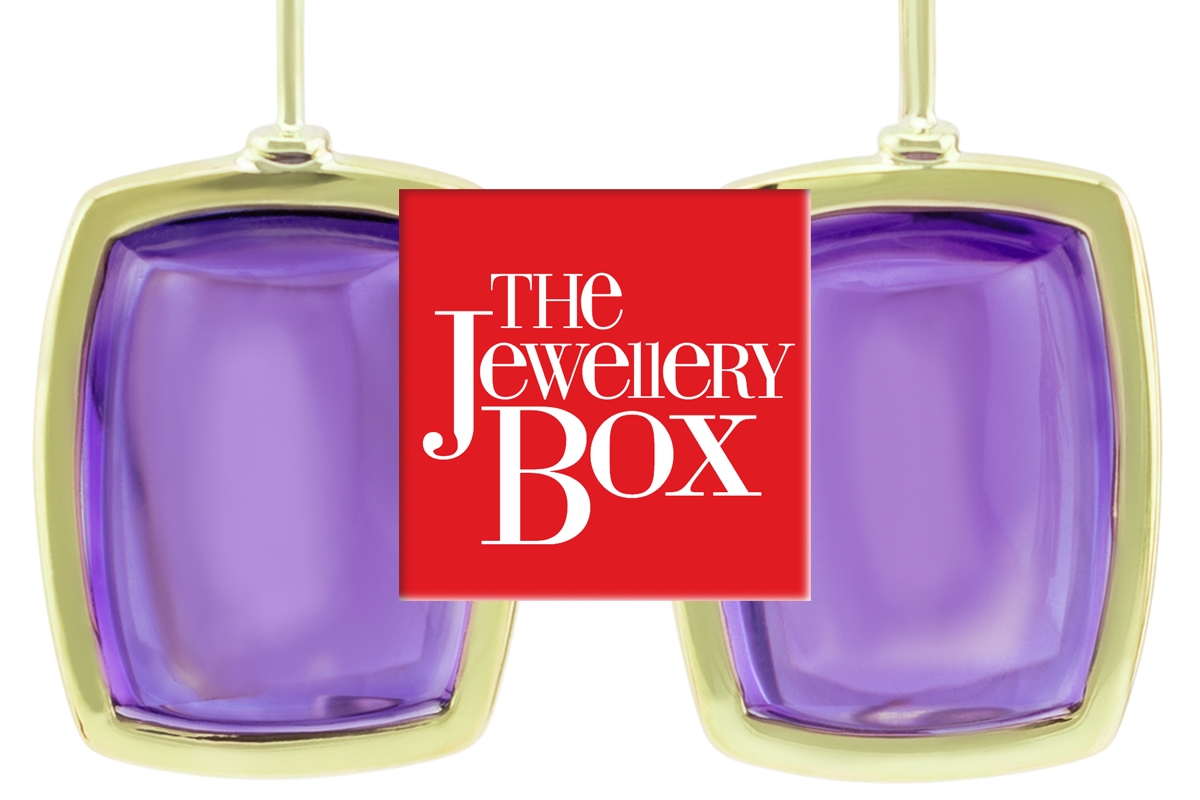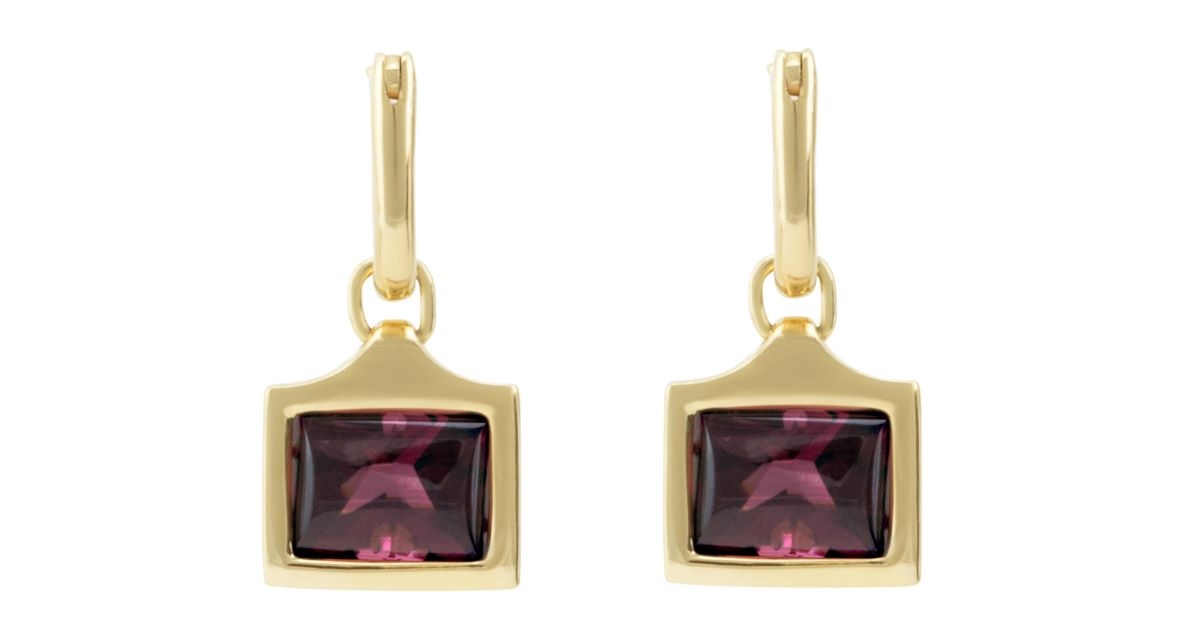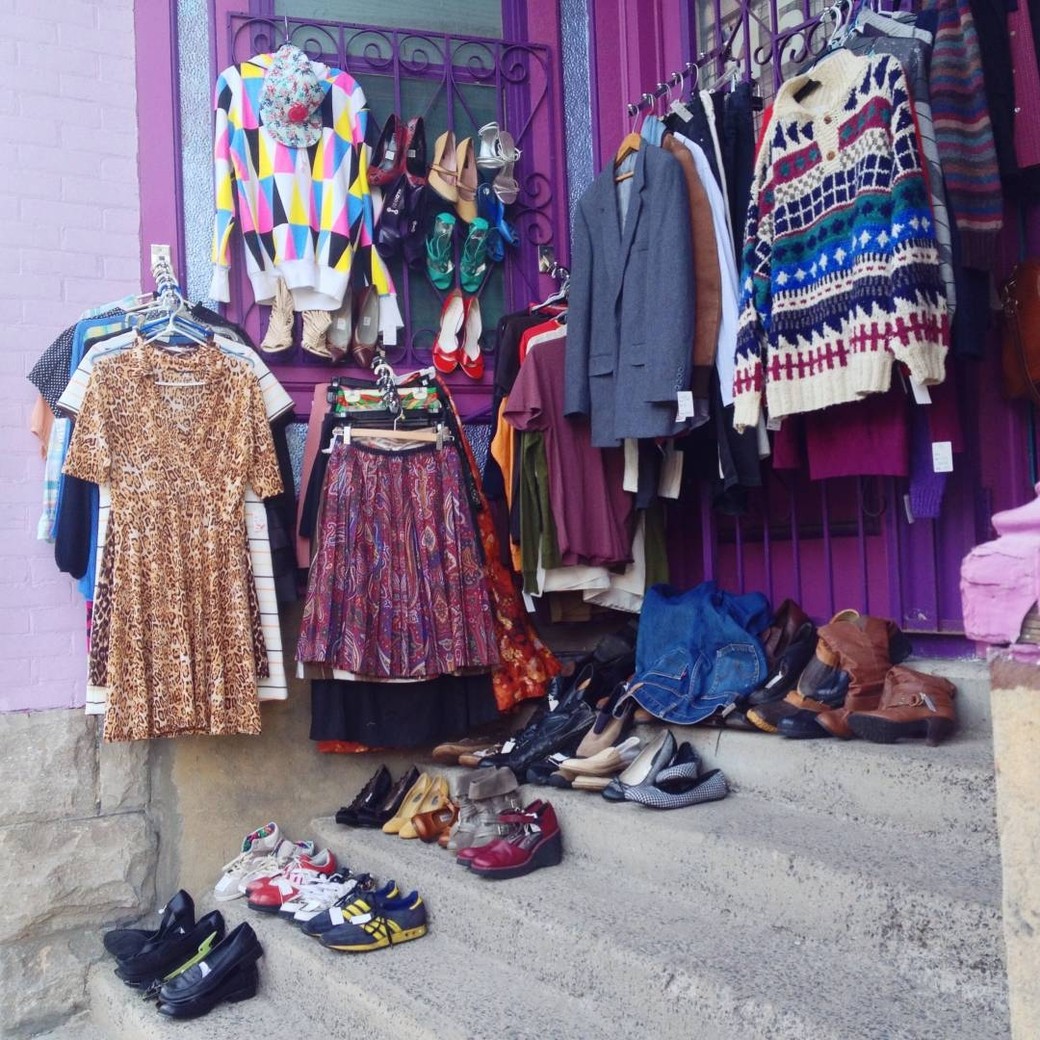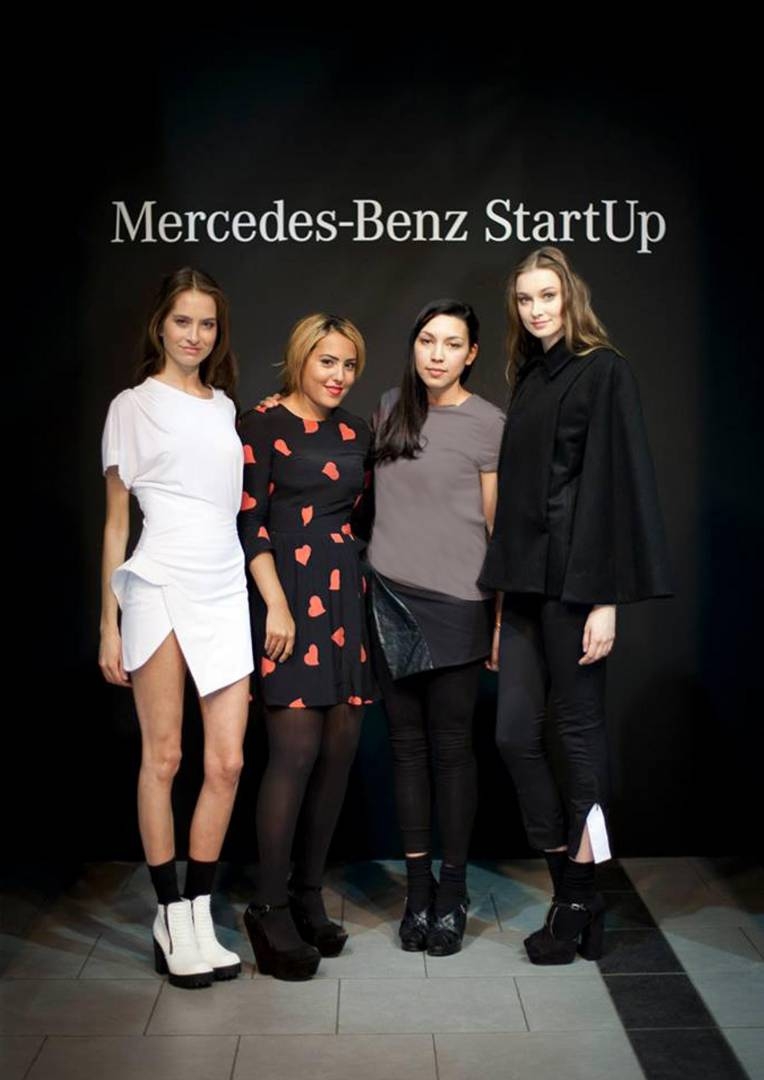
Purple rules: Four purple gems
Above: Amethyst cabochon earings in 18k green gold by Disegno Fine Jewellery
Nothing says “I rule” like the colour purple. Since ancient times, this is the colour most associated with royalty. Or with musicians royally renamed.
As early as the 15th century BC, dye makers in the towns of Sidon and Tyre (present day Lebanon) refined purple from the bolinus brandaris sea snail. A very laborious process. Directions: remove snail from sea, remove snail from shell, soak snail, remove snail gland, extract snail juice from snail gland, set snail gland juice in sun, wait, juice will turn white, yellow-green, green, violet, red, remove snail juice from sun when juice turns purple, sell for huge bucks to royalty who have nothing better to do with their wealth.
Poor little snail. Mountains of shells have been found in archeological digs in those two towns, their purple production lasting millennia. A German chemist tried to recreate Tyrian purple in the late 1800s. It took 12,000 mollusks to create 1.4 ounces of dye. Just enough to colour a hankie.
It ranks high in pre-Christian literature from Homer’s Iliad, the poems of Sappho, the plays of Aeschylus, the Book of Exodus to Virgil’s Aeneid. Legend says that Heracles’ dog made the discovery – as dogs are wont – by biting into the snail while on a walk with his owner and the nymph Tyrus along the seashore. The nymph immediately demanded a purple dress.
Alexander the Great wore it, the kings of Ptolemaic Egypt, emperors and their officers of the Roman Empire, apparently Caligula had the King of Mauretania murdered for his purple cloak (fashion rage), under Nero the common sale of purple cloth was punishable by death. In 1464, the Muslim conquest of Constantinople cut off supplies of purple powder and Pope Paul II decreed that scarlet was henceforth the colour of cardinals, a colour derived from an equally expensive source, the cochineal insect of South America.
But purple was still coveted enough in the Elizabethan era (16th c.) to be under Sumptuary Laws, which determined the colours, fabric and clothes that could/could not be worn by the classes of English society. Fashionistas. Only the royals were allowed purple.
The triumph of the commoner came in 1856 when an 18-year-old English chemist William Henry Perkin stumbled upon a synthetic purple while attempting to synthesize quinine, an anti-malaria drug. Made the family rich and brought purple to the masses.
When Isaac Newton discovered spectral colours in 1672 – viz. the colours of the rainbow – he didn’t find purple, he found violet. Violet is an extension of blue – roses are red, violets are blue – and it’s tucked at the far opposite end of the visible spectrum from red. Newton delineated red-orange-yellow-green-blue-indigo-violet in the spectrum but no purple. Purple is a secondary colour, a combination of red and blue.

Secondary in composition, definitely primary in fashion. So, if you’re feeling royal and looking for a gem to match, here are some options.
Amethyst: Since this is February’s birthstone let’s start here. Part of the quartz family, it was coveted for years (once again, popes and princes) until discovered in Brazil in vast quantities in the 1800s. Classic.
Rhodolite: One of my all-time favourites. Part of the garnet group. Think raspberry not grape. And think neon. I have a gorgeous one tucked aside in my collection for myself. Right, like that’ll happen any time soon. Cobbler’s kids.
Sapphire: You thought sapphire was blue. Well, it’s that, but so much more. Sapphire is of the species Corundum, which in its basic state is colourless. If it’s red we call it ruby, if it’s blue we call it sapphire. But if it’s any other colour – violet, pink, yellow, green, black, orange and purple – we call it sapphire plus the colour adjective. I have two purple sapphires, one is deep purple the other lilac. Mesmerizing.
Spinel: This gem should be more known, more appreciated. It’s a ‘gem dealers gem’: We know about them, you don’t. Like corundum spinel comes in a variety of colours: blue, red, purple, violet, pink. It’s very ‘wearable’, i.e. hard and tough. Commonly synthesized, uncommonly natural. Look for the real McCoy.
Pamela Coulston is a certified gemologist and owner of Disegno Fine Jewellery
Visit Disegno Fine Jewellery in Ottawa's ByWard Market or shop online














